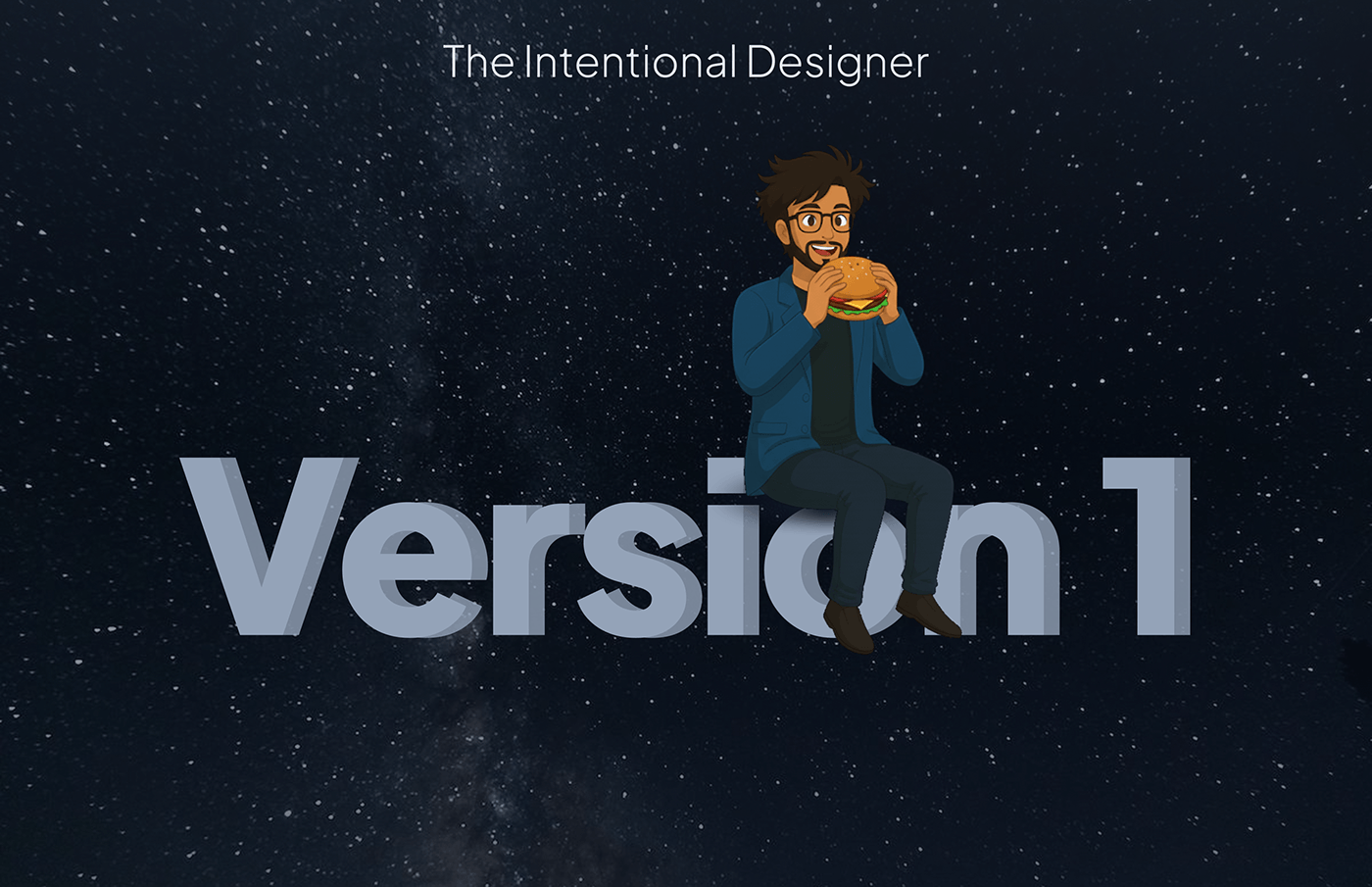The Intentional Designer - Aryan K. J.
The Intentional Designer: A Case Study of Strategic Design Process (Version 1: Foundation)
This is Version 1 of a 12-part meta-case study, focusing exclusively on establishing the strategic foundation of a product. The next 11 versions will cover the full execution, from research to testing.
For this strategic analysis, I'm using an ongoing dating app project as the practical example to break down the thinking, strategy, and reasoning behind every design move.
The Meta-Case Study Approach:
Most designers (including me earlier) focus on the what and how—listing processes, methods, and terminologies to prove what they know. But they often miss the why and for whom. That’s the gap I wanted "The Intentional Designer" to fill. Instead of a conventional case study, I created a project about the strategic process itself.
Guided by Dhairya (My Fictional Character), The Intentional Designer
Intent-Centered Strategy | Emotional Anchoring | Problem-Driven Development
Why I Chose This Project
While observing user behavior in the digital relationship space, I noticed a pervasive pattern: an overwhelming sense of emotional fatigue and ambiguity. Current dating models prioritize the quantity of matches over the quality of connection, resulting in low-effort interactions, ghosting, and general user burnout.
This wasn't just a poor user experience. It was a failure of intention built into the product design.
So, I took the initiative to use this project as a real-world lab to reimagine the foundational strategy. My goal is to demonstrate how to build an experience that anchors user intent and minimizes emotional friction, thereby solving a deep-seated trust and effort problem.
What Problem I Solved (Strategic Focus)
Through in-depth discovery (competitive analysis, semi-structured interviews, and review deep dives), and guided by our persona Dhairya, I defined multiple strategic breakdowns in the existing user journey:
| Problem Identified | Strategic Solution Introduced (V1 Concept) |
|---|---|
| Lack of Intent Clarity: Users wasting time due to misaligned expectations. | Clear Design Mandate (Clarity & Control) to inform all feature prioritization. |
| Profile & Emotional Fatigue: Overwhelmed by endless, low-substance profiles. | Progressive Disclosure Strategy to avoid overwhelming users with input or profiles initially. |
| The 'Stuck' Feeling: Users feel anchored to a boring routine and quit after long droughts. | Introduction of the Emotional Anchor concept—a strategic prompt that turns user frustration into productive action. |
Duration (Version 1: Foundation)
∼ 2 Days Total (self-initiated)
Day 1: Problem Framing, Discovery Methodology Planning, Competitive Analysis.
Day 2: User Observation/Interview Synthesis, HMW Statement definition, Core Strategy (Mandate & Progressive Disclosure) establishment.
My Design Process (Version 1 Focus)
This version focused entirely on the Discovery and Definition stages of my iterative framework:
1. Problem Discovery & User Empathy
Conducted mixed-methods research (qualitative/quantitative) to identify the core emotional friction points.
Defined the 'Why' of the project: moving from transactional swiping to intentional engagement.
2. Problem Definition & Strategic Mandate
Created the North Star HMW Statement to guide all feature development.
Established the Design Mandate (Maximize Clarity/Control, Minimize Anxiety/Ambiguity) as the litmus test for every screen.
3. Strategic Roadmap Planning
Mapped the high-level user journey structured around Progressive Disclosure, planning when and why key information (like preferences) is requested.
Strategically integrated the Emotional Anchor concept into the future roadmap (V8).
Outcome (Version 1 Deliverables)
This project’s first version allowed me to explore a real-world ethical design challenge where strategy and emotion intersect. I was able to:
✅ Define the strategic North Star HMW Statement for the entire product.
✅ Establish a clear Design Mandate for all future interaction design.
✅ Build the strategic rationale for the app's core differentiating features (like the Emotional Anchor).
✅ Demonstrate a rigorous, disciplined approach that defines the problem correctly before committing to a solution.
This initial work, guided by Dhairya, reflects how product strategy directly influences user success and retention—proving that design strategy is the foundation, not just an afterthought.
27 Sep 2025







